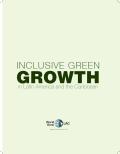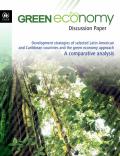Low income countries (LICs) require very large investments if they are to move to a trajectory of inclusive green growth. The most important sector for inclusive green growth is energy, both in terms of increasing generation from renewable sources, and improving the efficiency with which energy is used. This paper explores how additional private investment can be attracted into the energy sectors of LICs in both these areas at the scale and in the form needed.


This publication explores the commonalities between the existing and proposed paradigms and approaches to development that ensures well-being and respect for nature, and the concept of green economy in the context of sustainable development and poverty eradication. More specifically, the study examines the opinions expressed by Argentina, Bolivia, Cuba, Ecuador, Nicaragua and Venezuela, with regard to the adoption of a green economy as a pathway towards sustainable development.

This report concludes that with the right green investments, Serbia could generate new jobs and significant savings by adopting a green economy approach compared to business-as-usual. This report provides an overview of the country's economic sectors, and focuses on energy and agriculture.
This brief describes several ways that international cooperation can play a critical role in facilitating widespread innovation and implementation of new and appropriate green growth technologies. It outlines six existing institutional structures that have been invoked as possible examples for scaling up to foster green innovation more broadly and suggests several policy recommendations that are feasible in the near term.
